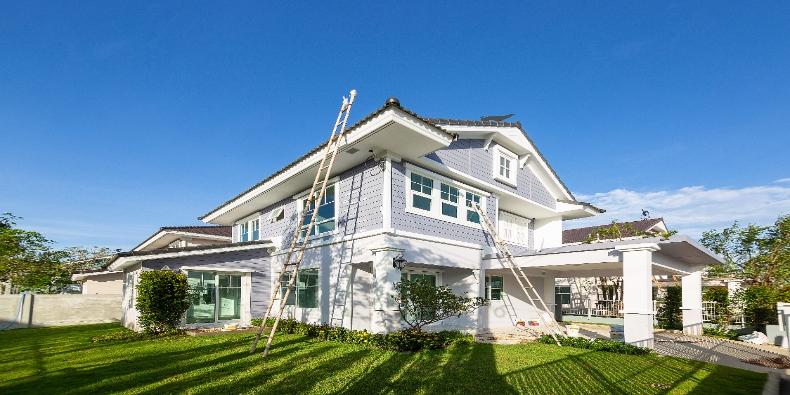5 Metal Roof Misconceptions

By DECRA Metal Roofing.
The truth about those metal roof myths you have heard.
If you’ve ever mentioned wanting to get a metal roof, you’ve probably heard someone say in response, “But don’t they make your house hotter?” or “What about when it rains?” When it comes to roofing materials, metal roofs certainly have more than a few misconceptions. This is partially because metal roofs have transformed so much throughout the years and there’s so much information online. If you are looking for some answers, look no further, here are five of the most common misconceptions about metal roofing, debunked.
Myth #1: Metal roofs make houses hotter in the summer and cooler in the winter.
When it comes to common metal roofing myths, this one couldn’t be further from the truth. In fact, metal reflects energy from the sun up and away from the home, unlike asphalt shingles which absorb the energy and transmit heat down.
Think of the metal hood of a car, for example. Even with heat from the sun above and the engine below, the hood of the car cools quickly once parked in the shade. The metal dissipates heat so well, that in just a few minutes, the hood often feels cooler to the touch than the surrounding air.
Now, think about asphalt pavement in the summer. After absorbing heat from the sun, the asphalt still has enough thermal energy stored to create steam after a cooling rain.
Poor solar reflectivity and low emissivity make asphalt one of the worst choices for energy-efficient roofing. Dark-colored asphalt shingles can reach temperatures as high as 160 degrees during the day and will continue to transmit that heat down into the home long after the sun goes down.
In the winter months, metal acts as an insulator, keeping the warm inside air circulating without escaping your home.
Myth #2: Metal roofs are noisy in the rain.
Standing seam roofing made from flat metal or aluminum sheets can be loud in the rain. That’s because they’re uncoated. The thicker the coating and texture of a roofing panel, the more effective it is at disrupting the reverberation of sound waves.
With a stone-coated steel roof from DECRA, you don’t have to worry about noise from the rain. Additionally, DECRA roofs don't require soundproofing underlayments that uncoated standing seam metal roofs need to block out noise.
Myth #3: Metal roofs rust.
Raw materials, like a sheet of corrugated metal found on your neighbor’s shed, can rust when exposed to the elements. To prevent this, metal roofing manufacturers combine aluminum and zinc into their products.
DECRA takes corrosion control a step further by applying a metallic alloy coating, made up of aluminum, zinc and silicon. The aluminum component ensures that a barrier against corrosion remains in effect once the zinc coating is sacrificed. The silicon component provides superior alloy coating adhesion. This helps the coating remain firmly in place while the high-grade carbon steel is rolled, stamped, or bent during the manufacturing process.
This formula combines the strength of steel with the rust-resistance of aluminum to ensure long-lasting endurance to the elements.
Myth #4: Metal roofs attract lightning.
It’s important to note that metal conducts electricity, but electricity is not drawn to it. Research on lightning protection reveals that metal roofing is no more likely to attract a lightning strike than any other type of traditional roofing material.
In fact, as a non-combustible material, metal roofs are one of the most desirable materials for homes and businesses in lightning-prone regions.
This is because when lightning strikes a home or building, it doesn’t matter if the surface it hits conducts electricity or not. If the roof is covered with combustible materials, such as wood shakes or asphalt shingles, lightning tends to follow the available paths to the ground via electrical wires, plumbing pipes, or telephone lines, which can lead to a fire.
DECRA Metal Roofing provides an easier path to the ground, spreading the force out and preventing concentrated hot points in a lightning strike with the highest Class A fire resistance of non-combustible steel.
Myth #5: Metal roofs are more expensive.
There’s a grain of truth to this myth if you only factor in the cost of the original roof installation. But weigh in the fact that traditional roofing materials, such as asphalt shingles, wood shakes and clay tiles need to be replaced every 12 to 20 years, and the scale tips in favor of metal roofing which has a lifespan that is two to three times longer than that of traditional roofing materials. The costs associated with ongoing repairs and replacements add up when compared to the price of a one-and-done metal roof.
Get the added durability and longevity of a DECRA metal roof
Now that you’ve learned fact from fiction when it comes to metal roofs, it’s time for a DECRA roof to enhance and protect your home. From durability to efficiency to longevity, you can experience the long-lasting benefits of a DECRA metal roof. To get started, use DECRA’s visualizer to see what a metal roof will look like on your home.
Have a question? AskARoofer.
Find your local roofing contractor in the RoofersCoffeeShop® Contractor Directory.
Original article source: DECRA Metal Roofing









Comments
Leave a Reply
Have an account? Login to leave a comment!
Sign In